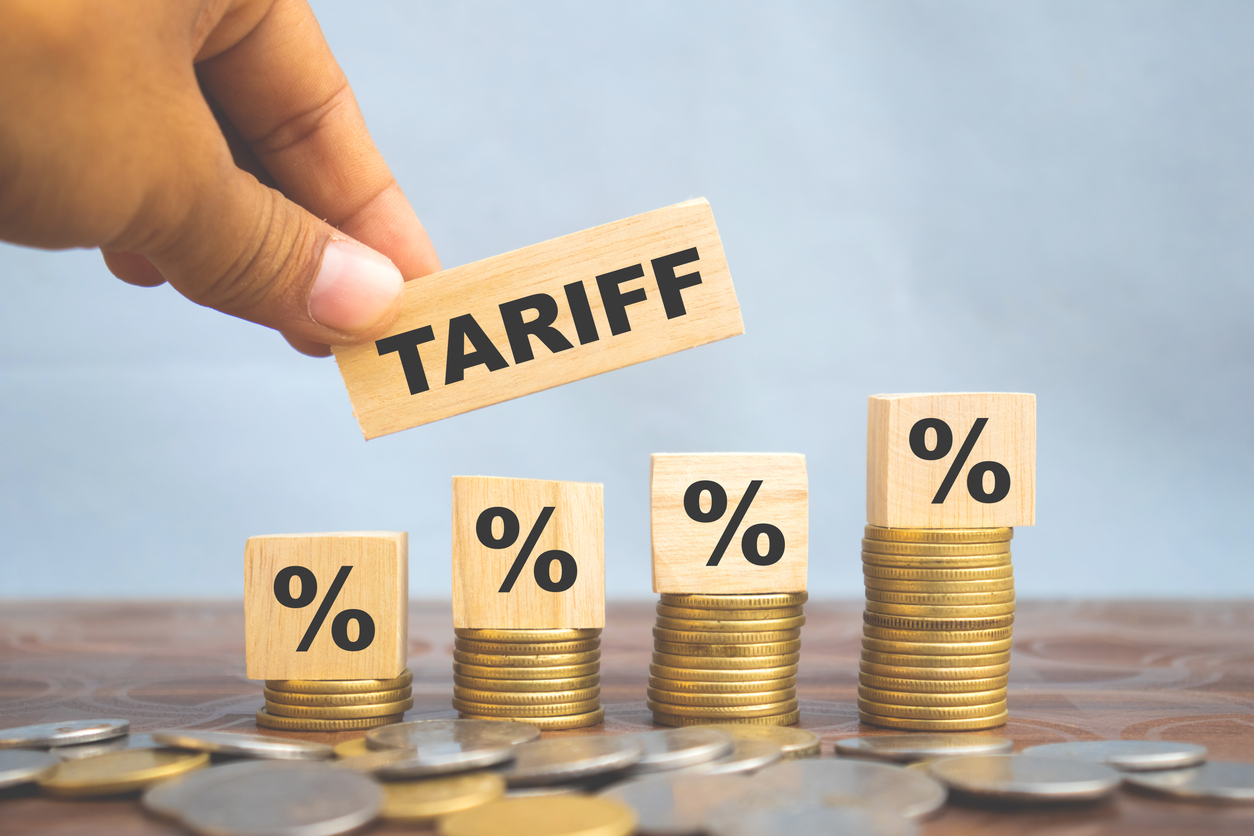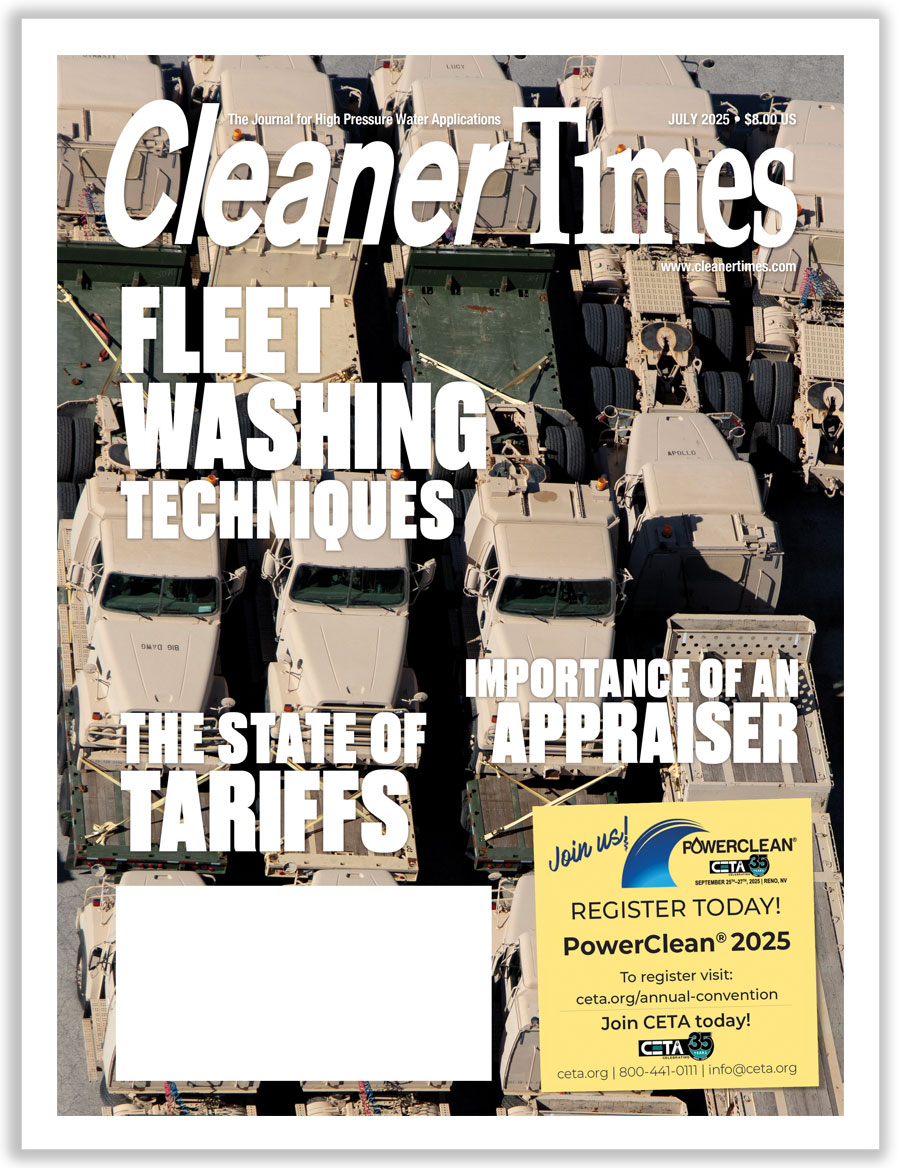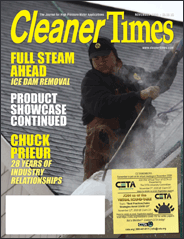
State of the Tariffs—In Flux
by Diane M. Calabrese | Published July 2025

How’s it going on the tariff front? The flux between what a tariff is today and what might change tomorrow is not that unusual in U.S. history.
Since colonial times tariffs have been used to protect industrial and agricultural products made or grown within our nation. The goal is to not allow domestic prices to be undercut by imported goods.
Most of us recall the Smoot-Hawley Tariff Act (1930) as our middle-school introduction to tariffs, especially the contentiousness surrounding them. But the Fordney-McCumber Tariff Act (1922) with a less poetic name is not as widely recalled.
In 1934, The Reciprocal Tariff Act granted the president authority to alter tariffs as needed (up to plus or minus 50 percent) to meet the changes made by a trading partner. In short, the only novel issue about tariff discussions, ongoing since the 47th president took office, is the pace at which they are occurring.
Make that the pace and the scope. Few countries are not involved. And manufacturers in the United States that source raw materials, components, or simply packaging from other nations are confronted with difficulty in budget planning because of the fluctuations.
How are manufacturers in our industry managing? We hear often of the time being consumed by what every media outlet in the country now labels “tariff uncertainty.”
Fortunately, we have some insight into the situation from two members of our industry. Especially of interest is the commitment everyone shows to dealing with the tariff climate—in flux—that exists, and not the one they wish would prevail.
As we write in May, the date June 9, 2025, still stands as the day when the implementation of a 10 percent base tariff will be implemented with some exceptions, but that may change.
(An entire commercial sector of “tariff trackers” has already grown on the internet, but the federal government also offers a consolidated website, Presidential Tariff Actions. See https://ustr.gov/issue-areas/presidential-tariff-actions/ .)
Let’s sum up the situation this way: It’s not easy to project sales or the cost of making a sale, etc.
“I believe that projecting sales is much more difficult to deal with,” says Aaron Lindholm, CEO and president of Veloci Performance Products in Burnsville, MN. “The products that come from China serve as an example. We have no certain way to predict whether the consumer will purchase at the much higher price point. It becomes a gamble to know what items to continue to purchase and what items to put on hold, cancel, or discontinue altogether.”
Beyond the fundamental difficulty, there is another issue—the movement. “The problem in the first half of 2025 is that these tariffs are not fixed; they are moving and changing, which makes it difficult to plan. Overall, it is a tough business environment to make decisions and feel confident we are making the correct decision.
“However, with many years of experience, fantastic vendors and customers, and lots of communication with all parties, we find that we are able to make some calculated risks to keep the products flowing and the industry moving forward,” continues Lindholm.
In fact, the can-do, will-do spirit has been tapped before. “The supply chain disruptions during the pandemic were similar in some ways and quite the opposite in other ways,” says Lindholm.
“With the recent China tariffs, ports have the opposite problem that they did during the pandemic,” explains Lindholm. There’s no port congestion now comparable to during the pandemic, but prices on shipping are increasing.
“COVID-19 taught us that we have a resilient economy,” says Lindholm. “And even though it may be uncomfortable, the uncertainty doesn’t last long as people want to get back to living life as quickly as possible.”
Even with determination and resilience, is the time commitment to deal with tariffs noticeable? “Absolutely it is noticeable,” says Lindholm. “We have had daily meetings for the past 60 days and many actions from those meetings.
“We have dedicated most of our days recently to managing this situation, speaking to vendors, customers, and other partners to better gauge and understand what is happening,” continues Lindholm. “These activities have been a daily disruption to normal business, but there is nothing we can do to change the situation, so we simply build a game plan and execute it.”
When tariffs become settled again, with changes still possible always but less frequent, Lindholm anticipates a positive outcome. “De minimis rule changes are a very good development for our industry as it will make it much more difficult for direct sellers from China to undercut our industry on pricing. The bigger problem with consumers buying direct from China is that there is generally no customer service and no recourse for customers if there are issues.”
Reciprocity in Theory
Tariff renegotiation is part of President Trump’s America First Trade Policy. For clarity, it’s important to note that reciprocity in tariffs is much more complex than another country imposes a 10 percent tariff on U.S. products, so the United States imposes a 10 percent tariff on products imported from that country.
At the Presidential Tariff Actions website cited in the first section, there is a link to a two-page pdf titled “Reciprocal Tariff Calculations.” The text is very much worth reading because it emphasizes the relation between lobsided tariffs and trade deficits.
The current administration is trying not only to bring more jobs back to the United States but also to reduce the trade deficit that exists with any number of nations. The idea is to find the tariff point that can bring a trade deficit to zero.
Just as tariffs do not impact all nations in the same way, they do not impact all sectors of the economy the same way. “Tariffs do not impact all industries equally,” says Dave Thiesse, vice president of communications, Mi-T-M Corporation in Peosta, IA.
“Unfortunately, in the small engine business that we are in, the impact is enough that we need to do something about it,” explains Thiesse. “I think all business leaders know that tariffs are an important part of our economy; however, several consumers only understand what they hear in the news or online.”
So many tariffs under review and in flux at one time present a challenge. “One tariff is easy to manage,” says Thiesse. “All tariffs, all at once or staggered, is very hard to manage appropriately.”
Thus, there’s no question tariffs merit the attention they are receiving. “Tariffs have an impact on our profitability and the decisions we make,” says Thiesse.
“The variable timing and the number of different tariffs really make it difficult to determine when to pass it along to the customer and for how much,” explains Thiesse. And it’s difficult to assess “what impact it will have on our business.”
For many members of our industry, what’s transpiring is not new. “Most of us in the industry have gone through this before with President Trump’s first administration,” says Thiesse. “Even though we have the experience, this time around is ten times worse because of the constant change in direction.”
Constancy in business never happens. But members of our industry—and all industries—want the next best thing in a business climate: a stable equilibrium. Yes, there will be ups and downs, but there will be an identifiable baseline.
Coping with inconstancy is a must now. “We are evaluating every part of our business to understand ways to mitigate tariffs,” says Thiesse. “Some of it is easier than others, but in the end, there isn’t an alternate source for every component. It is a full-time job trying to navigate all the moving pieces.”
There are strategies of all sorts being evaluated as ways to deal with new tariffs. “One of the examples is to have components moved from China to Vietnam, where the cost of labor is higher, but currently the tariff is lower,” says Thiesse.
On the bright side, explaining the situation to customers has become less difficult. “This time around all customers are understanding because of what is talked about in the news and to some degree they expect prices to go up,” says Thiesse.
Tariffs are living up to their name. The root word for tariff is found in Italian and derived from the Arabic term, meaning “notification” or “making known.” In the bigger scheme of things, the use of a list to explain all the fees attached to a good moving from place to place was a tariff. Now, we hear tariff equated with “tax,” which is debatable.
Two final words here on tariffs. Controversy about tariffs is nothing new. Neither are politics and tariffs. Soon after the Smoot-Hawley Tariff Act came into being, the names were inverted so that Smoot got first billing thanks to him being the legislator with more political weight.
And as for a tariff as a tax, residents of many states are seeing genuine tax increases (and fees) attached to everything. The focus on tariffs obscures that. (Maryland introduces a new “tech tax” of three percent on July 1. Data, information, and all other digital transfers will now be taxed.)





